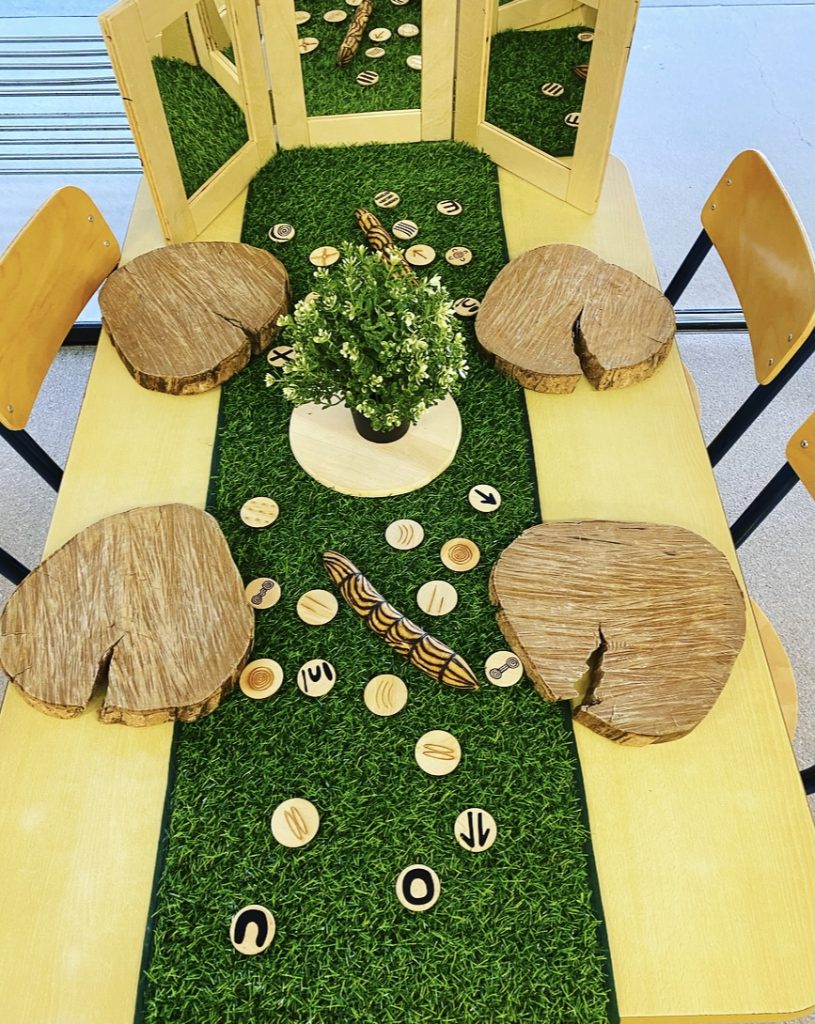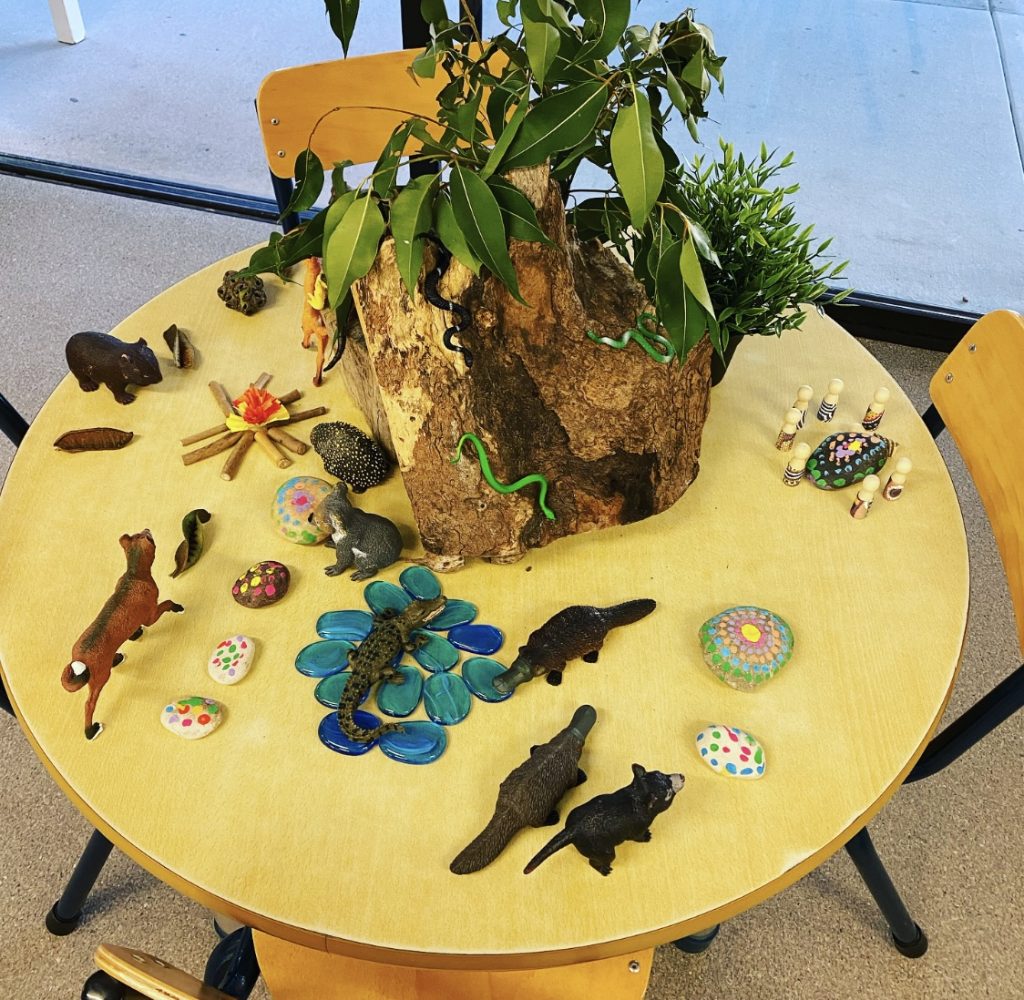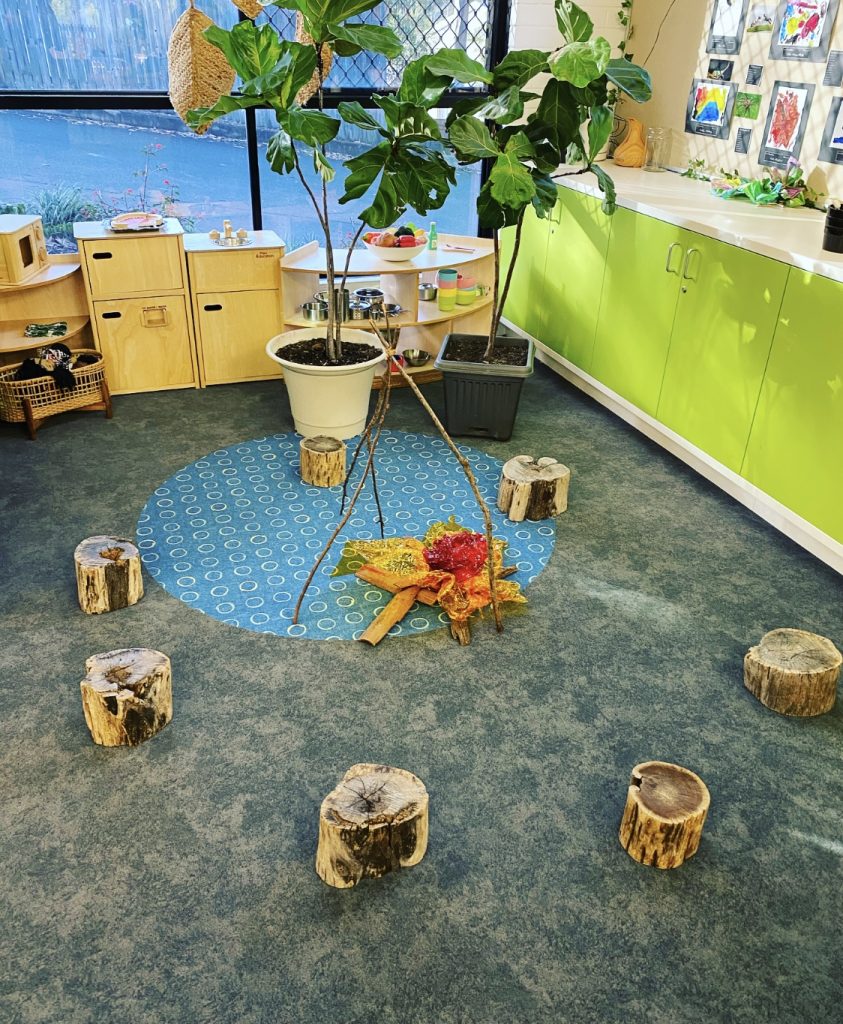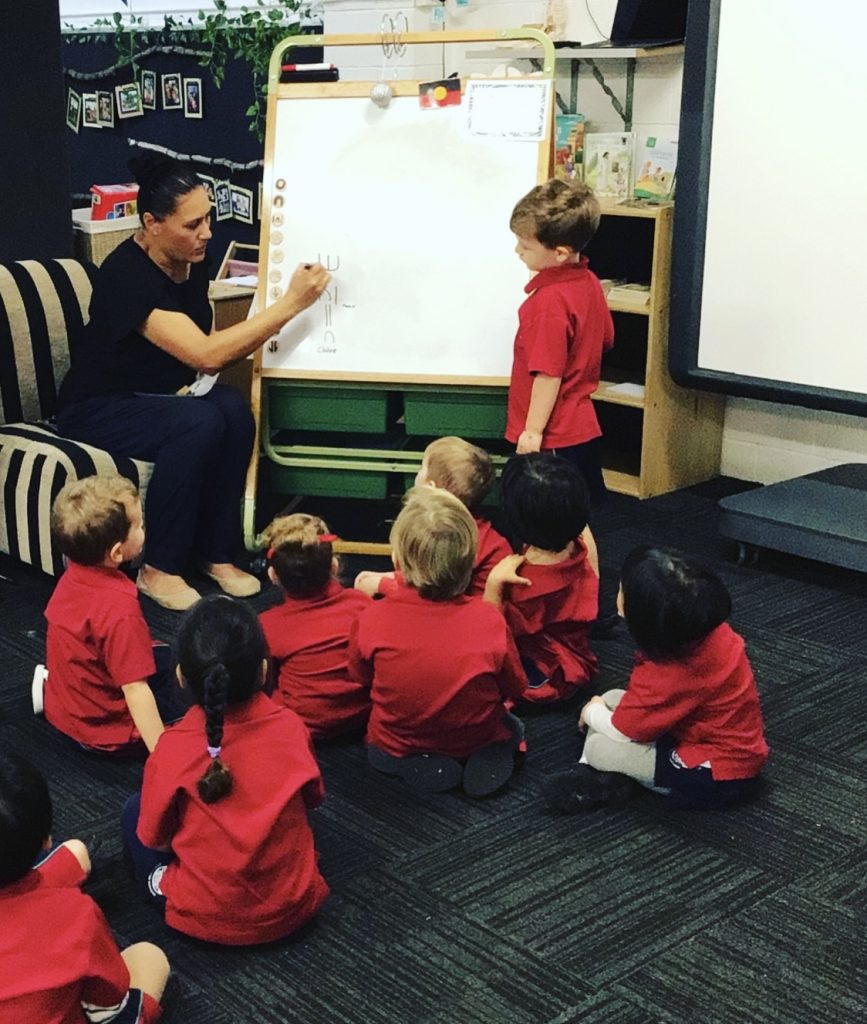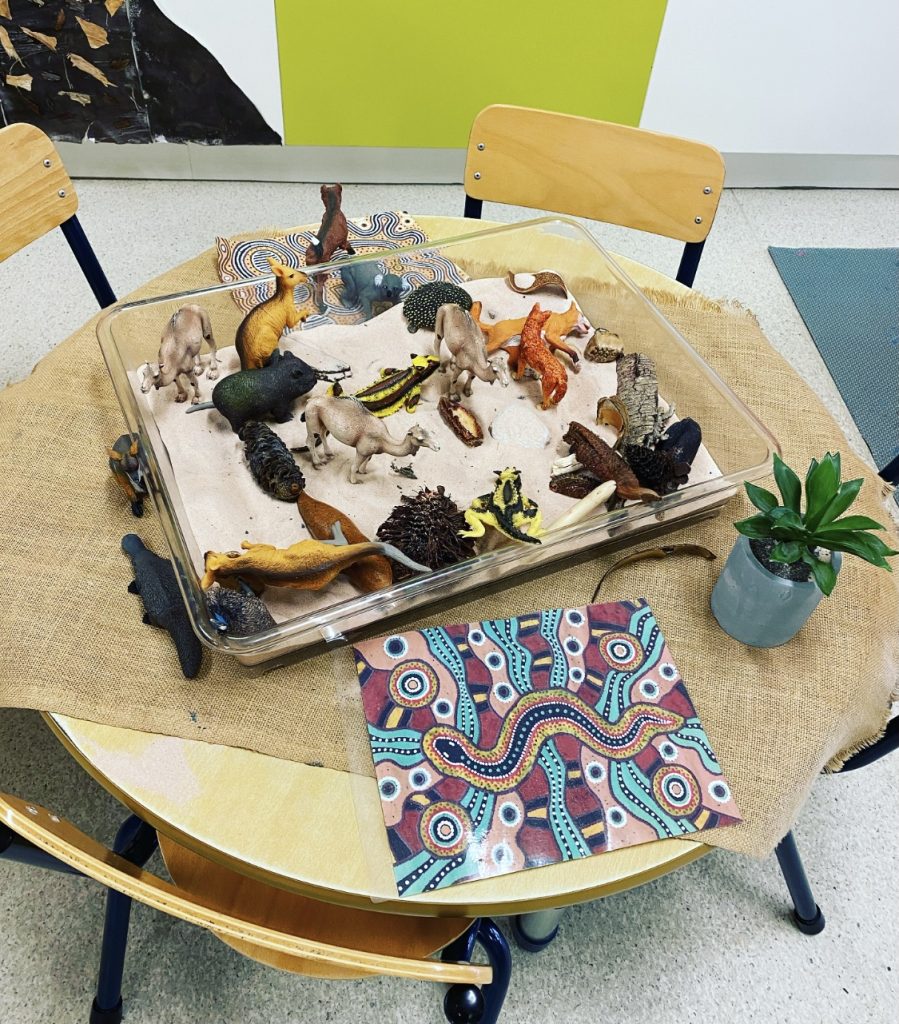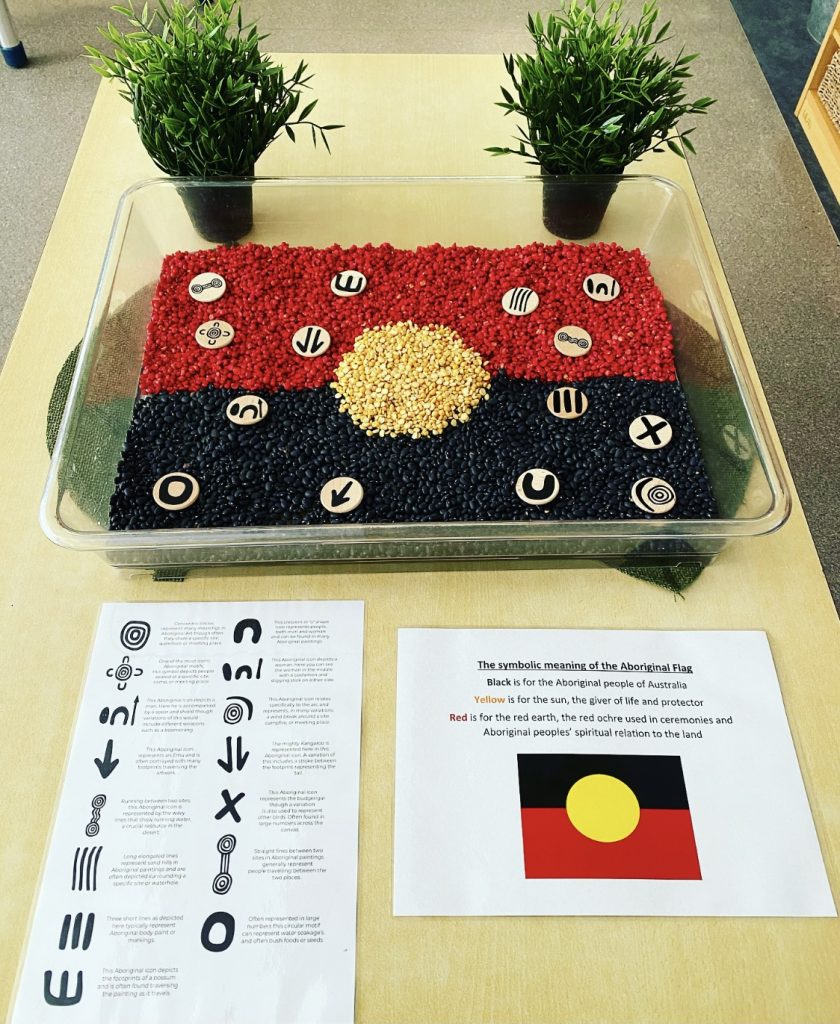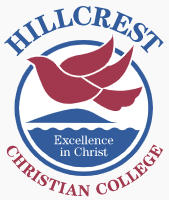Naidoc Week
In early July, Hillcrest Kindy celebrated the history, culture and achievements of Aboriginal and Torres Strait Islander people with Naidoc Week. This year’s theme, “Heal Country” called for stronger measures to recognise, protect, and maintain all aspects of Aboriginal and Torres Strait Islander culture and heritage. With Aboriginal and Torres Strait Islander peoples very much apart of the Australian culture and heritage Culture, it is our responsibility to educate our children on our beautiful and diverse nation.
Culture and Identity
Culture is central to a child’s individuality, identity, sense of belonging and success in lifelong learning. The Early Years Learning Framework ask educators to build upon children’s understandings of diversity, specifically Aboriginal and Torres Strait Islander cultures.
Our Pre Kindy and Kindy classrooms engaged in a wide range of amazing activities and experiences to explore and discover the Aboriginal and Torres Strait Islander culture and heritage. Some of the highlights for each class were:
Pre Kindy
Pre Kindy children were introduced to Aboriginal symbols which are commonly used in painting, rock engravings or sand drawings to tell stories, communicate important events or depict daily activities. The children collaborated and co-created their very own story on the whiteboard using the symbols. The story was a beautiful rollercoaster of a journey between a girl, a possum, an emu, a kangaroo and a bird who through trials and tribulations, became friends forever.
To further extend on this, the children will be working together to illustrate their beautiful book and share it with the other classrooms and their families – so stay tuned! This activity allowed for the children to develop an understanding that symbols are a powerful means of communication and that ideas, thoughts and concepts can be represented through them.
Kindy 1
Kindy 1 discussed how traditionally fire is used as a practical tool in hunting, cooking, warmth and managing the landscape. Fire played a very important part in the lives of Australia’s Indigenous people. Not only did it serve basic functions such as cooking food and keeping people warm at night, but also it was an essential part of the people’s land management. Over tens of thousands of years, Indigenous people learned to use fire in a way that kept the environment in balance.
To extend on this further, we set up a beautiful campfire area complete with a yarning circle, marshmallows, damper and a beautiful starry sky! The children absolutely loved this experience and spent quite some time all together,. They sat around the campfire, engaging in some beautiful discussions and roasting their marshmallows and damper. It was beautiful to hear the children sharing their own knowledge based on what they have learned so far and also create their own working theories to fill in the gaps of their knowledge. These experiences allow for the children to explore the diversity of culture, heritage, background and tradition. This diversity presents opportunities for choices and new understandings.
Kindy 2
Kindy 2 learned that while the Australian Aboriginal people have over 250 languages, they do not have their own written language. Instead, they use many common symbols in their art to preserve their culture and tradition. These ancient symbols can be seen in their rock paintings, cave paintings, body paint, ceremonial clothing, and sand painting. We explored some of the more common symbols. Miss Katie made some beautiful symbol cookies for the children to use within their play. The symbols were placed on the group time mat with the 2021 Naidoc Week poster. The children carefully observed the various symbols within this year’s poster and matched up the symbols they could with our symbol cookies. For those symbols within the poster they couldn’t identify, the children collaborated with each other to share ideas on what they thought the symbols might mean. Then they created their own working theories about what story the poster was telling.
To further extend, the children engaged in group time where Miss Jess had the children draw some of the symbols using ochre. Australian Aboriginal people have a tradition of using ochre pigment to paint that dates back to ancient times. These ochres are primarily natural pigments and minerals found in the soil, or even in charcoal. Paintings using these natural colours depict Aboriginal Dreamtime stories and maps. They were used either in body painting, rock painting, on artefacts and sometimes even on sand. The children chose which symbols they wished to paint and took turns at painting their symbols using the special ochre. Miss Jess also painted the symbol the children chose on their hand. These activity allowed for the children to develop an understanding that symbols are a powerful means of communication and that ideas, thoughts and concepts can be represented through them.


